
Intro: Who is Freddy Fender?
Freddy Fender, or his real name, Baldemar Garza Huerta, is an American Tejano musician born in San Benito, Texas. He changed his name in 1959 when he decided to combine Freddy with the brand name of his guitar, Fender. Falling under the genres of country, rock & roll, pop, and Tejano music, Freddy was a solo artist who also formed the Texas Tornados in 1989 and Los Super Seven in 1998. Up until his death in 2006 from lung cancer, Freddy Fender had contributed tons of knowledge and love to the Tejano culture through music.
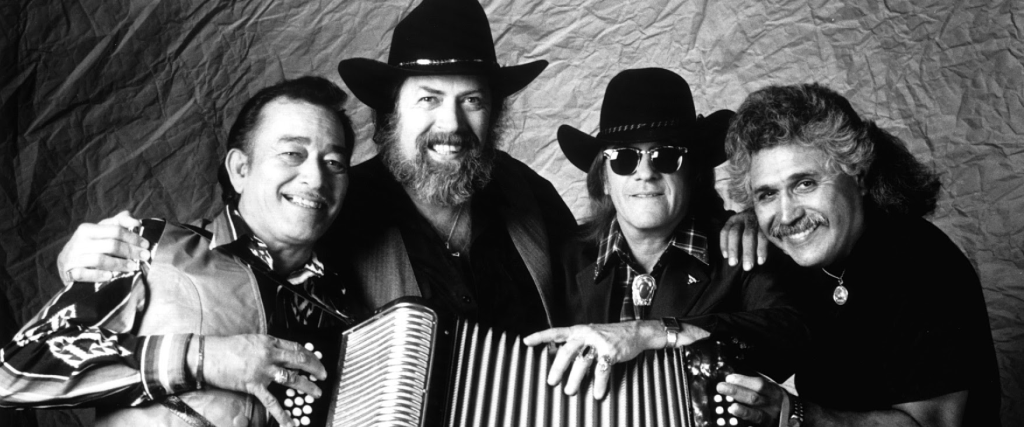
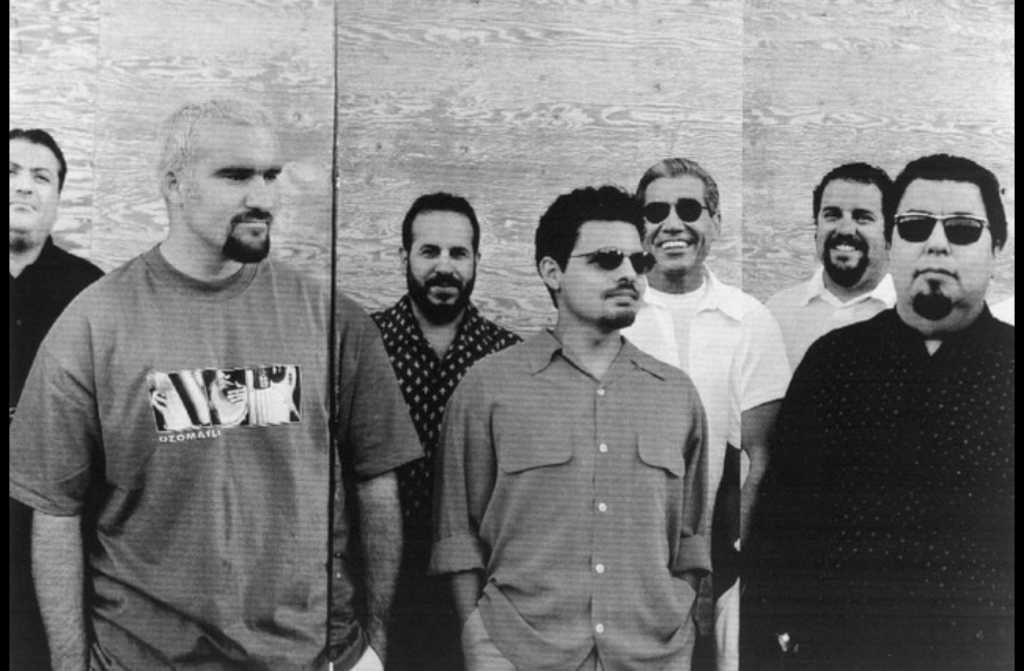
Artifacts, Upbringing, and Career

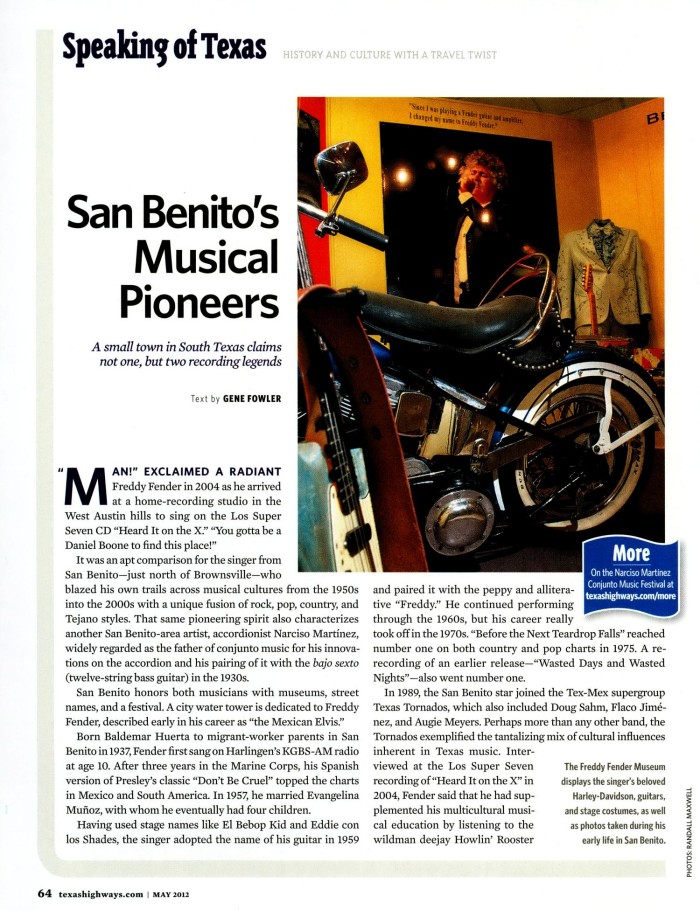
Freddy Fender began singing at the age of 10 for KGBS, Harlingen’s radio station. His parents were two migrant workers, and at the age of 16, he decided to drop out of high school to join the Marine Corps. Once he served three years in the field, he returned to South Texas and continued performing under various names, including El Bebop Kid, Eddie con los Shades, and Scotty Wayne. During that time, he also had a huge hit in Mexico and South America for his Spanish version of “Don’t Be Cruel” by Elvis Presley, called “No Seas Cruel”. 1959 is when he decided to take on the name Freddy Fender, taking the last name from his guitar. Before changing his name, he married Evangelina “Vangie” Muiz in 1957, with whom he had four children. They got divorced but then remarried. Evangelina died years later, in 2018.
While digging for artifacts, I came across an article published in Texas Highways in 2012. The importance of this artifact, which you will find scattered around the post, is that it continues to share his legacy in Texas music even after his death in 2006.
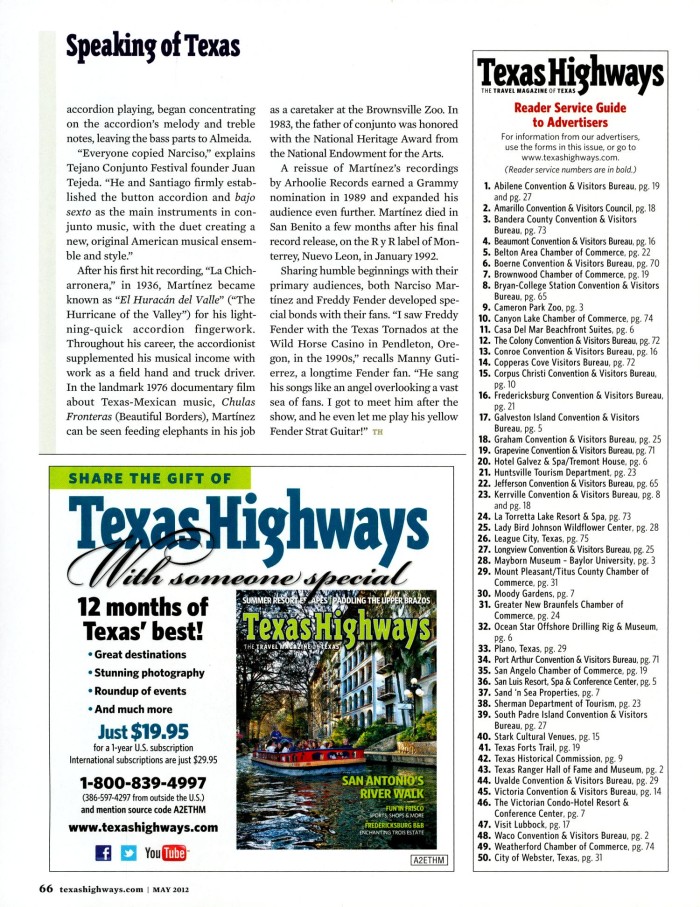
While reading the article, I came across his kind-hearted personality towards some of his fans. According to his fan, Manny Gutierrez, he recalls seeing Freddy Fender with the Texas Tornados at the Wild Horse Casino in Pendleton, Oregon, in the 1990s. “I got to meet him after the show, and he even let me play his yellow Fender Strat guitar.”
Before forming the Texas Tornados and Los Super Seven, Freddy played many different gigs, including a very famous one during the height of his career called Super Dance 6.
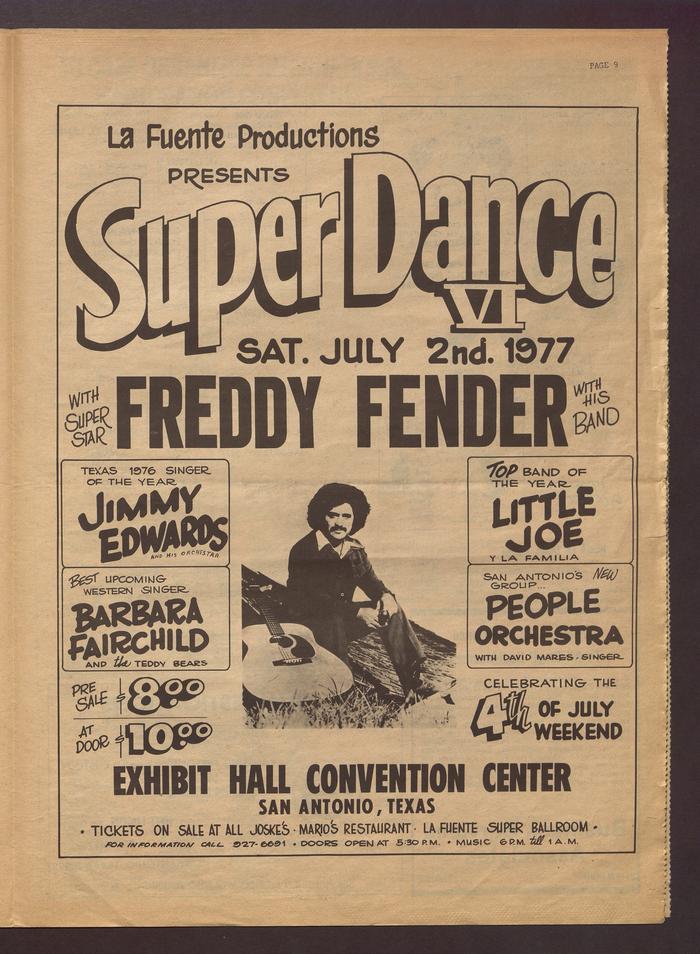
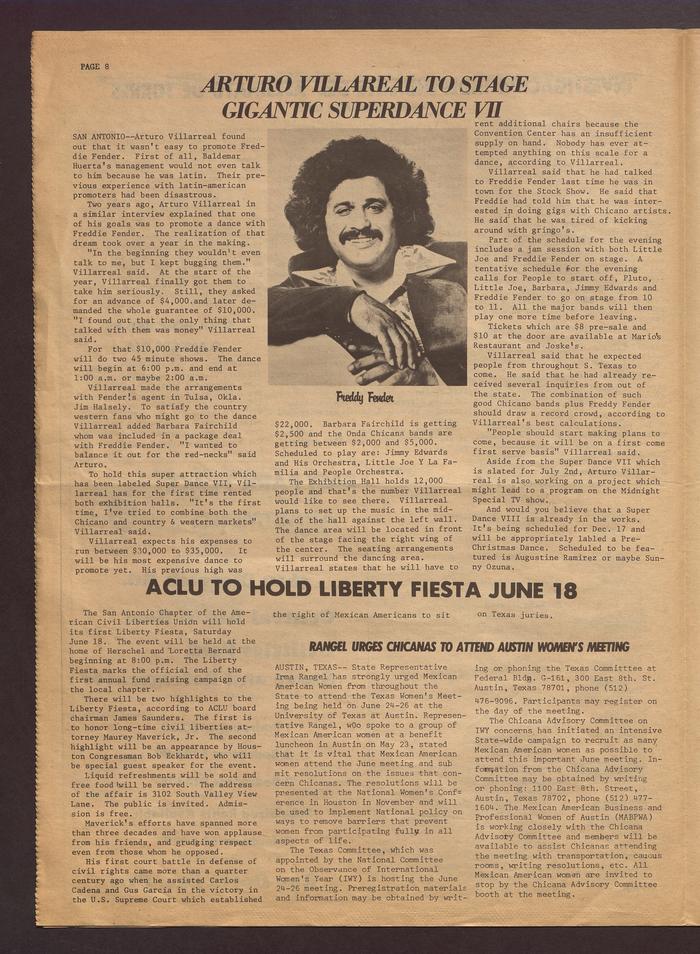
Super Dance 6 was a concert in San Antonio that consisted of other Chicano artists such as Jimmy Edwards, Barbara Fairchild, Little Joe, and the People Orchestra. In the newspaper article scanned from 1977, they discuss that there were multiple Super Dance concerts in the works, so this gathering came about at different times of the year.
Arturo Villarreal, a businessman and creator of the Super Dances, explains in the article below that it wasn’t easy promoting Freddy Fender for Super Dance 6. He recalls that Freddy’s management wouldn’t talk to Arturo due to the fact that he was Latin. They justified it because previous experiences with Latin-American promoters had been disastrous.
Time passes, and eventually Arturo gets Freddy Fender to play a 45-minute show for 10,000. Quoting the article, Arturo says “I found out that the only thing that talked with them was money”.
The show started at 6 p.m. and continued until 1 or 2 a.m.Arturo was looking forward to seeing about 12,000 people inside the Exhibit Hall Convention Center.
Top Songs
This song from Spotify is in Spanish, but he has sung it in English with the Texas Tornados and on other occasions. The song is about him promising to return right away before the next teardrop falls if this person gets their heart broken. According to a source I found, Freddy didn’t want to record the song in the first place but still did anyway. He thought it was over, but it turns out it was a huge hit. Before the song reached Freddy, it had also been recorded by many other artists, including Duane Dee, Linda Martell, and Jerry Lee Lewis (Fox).
Wasted Days and Wasted Nights is a bop! Out of all of the songs, this is my top favorite. To me, his voice does amazing things. The song has this upbeat sound, but the lyrics refer to a relationship that goes sour. It’s definitely going on my Texas playlist.
Fender died in 2006; however, they recorded a version of him singing Jingle Bell Rock before his death. This is the top song on Spotify for him, with almost 740,000,000 streams. I just had to include it.
After his Death
Freddy died in 2006 from lung cancer, but his fans still adore him today. From the artifact down below posted in the same Texas Highways magazine, Charlie Rich Jr., Freddy’s piano player, said he would be even larger in death than in life. which can be true for various other artists as well.
Inside Freddy Fender’s hometown of San Benito, there is a museum dedicated to his music and various artifacts he owned. Unfortunately, the museum is not operating due to the effects of the pandemic. They had a website, but it was very outdated and didn’t show any of the instruments. However, when reading reviews from previous years, they all said that the museum was a definite must-visit. The museum is even mentioned in the article down below!
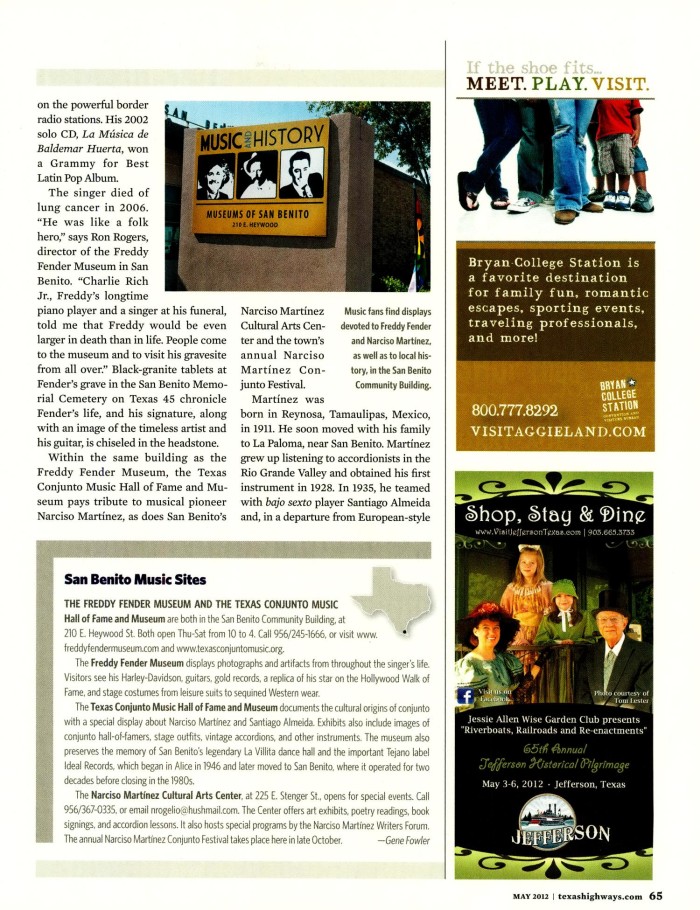
When searching more about his death, I also came across an interview from 2004 with the Associated Press. He discussed what it would mean to him to be inducted into the Country Music Hall of Fame. However, 17 years later, there have still been no Hispanic members inducted.
Today, one of his fans, Veronica Medrano, created a petition to get him inducted into the Country Hall of Fame. They need 5,000 signatures, and they currently have 4,270.
If you would like to sign the petition the link is here: https://chng.it/szGPf4Cbnh
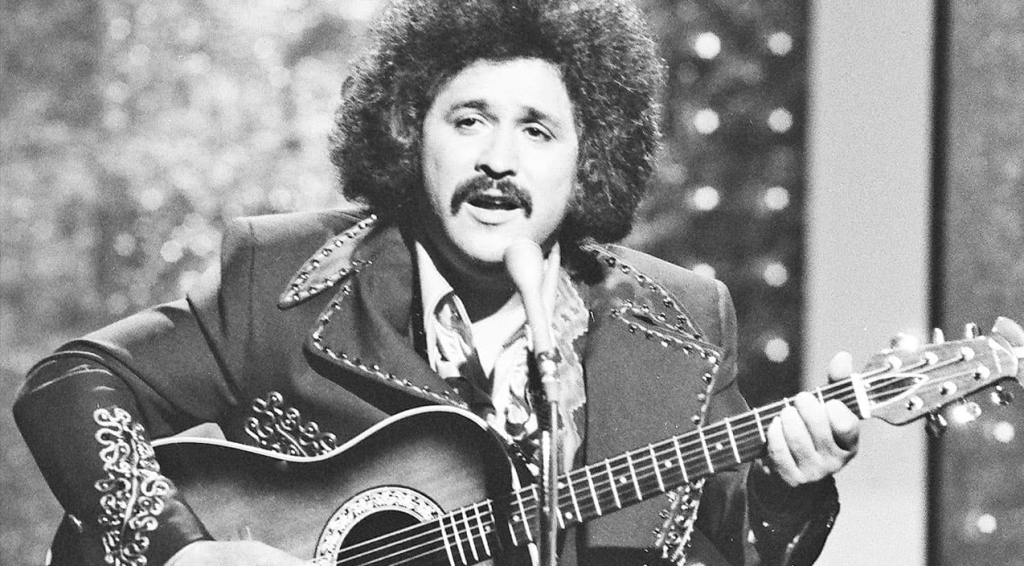
Resources:
Acosta, Teresa Palomo. “Huerta, Baldemar [Freddy Fender] (1937–2006).” TSHA, 3 Apr. 2015, https://www.tshaonline.org/handbook/entries/huerta-baldemar-freddy-fender.
Fox, Courtney. “’Before the Next Teardrop Falls’: The Story behind Freddy Fender’s Crossover Smash.” Wide Open Country, 5 June 2022, https://www.wideopencountry.com/before-the-next-teardrop-falls/.
Lohrmann, Charles J. “Texas Highways, Volume 59, Number 5, May 2012.” The Portal to Texas History, Texas. Department of Transportation., 23 Oct. 2015, https://texashistory.unt.edu/ark:/67531/metapth639825/hits/?q=freddy+fender.
News-Archive. “News and Events Archive.” Center for Texas Music History : Texas State University, Texas State University, 20 Mar. 2023, https://www.txst.edu/ctmh/news-events/news-archive.html.
Press, The Associated. “Freddy Fender, 69, Legend in Texas and Country Music, Dies.” The New York Times, The New York Times, 15 Oct. 2006, https://www.nytimes.com/2006/10/15/arts/music/15fender.html.
Rodriguez, Jose Luis. “Chicano Times (San Antonio, Tex.), Vol. 8, No. 116, Ed. 1 Friday, June 17, 1977.” The Portal to Texas History, Jose Luis Rodriguez, 9 June 2021, https://texashistory.unt.edu/ark:/67531/metapth1337631/hits/?q=freddy+fender.
Saldana, Hector. “Arturo Villarreal – Father of ‘The Super Dance’.” MySA, San Antonio Express-News, 28 Aug. 2012, https://www.mysanantonio.com/entertainment/article/Arturo-Villarreal-father-of-the-Super-3813156.php.
“Sign the Petition.” Change.org, https://www.change.org/p/induct-mexican-american-freddy-fender-into-the-country-music-hall-of-fame.
Valle, Fernando Del. “Fender Museum Future in Limbo.” AP NEWS, Associated Press, 21 Jan. 2018, https://apnews.com/article/museums-archive-f49bab135ae149569a19609ea9a0c233.
